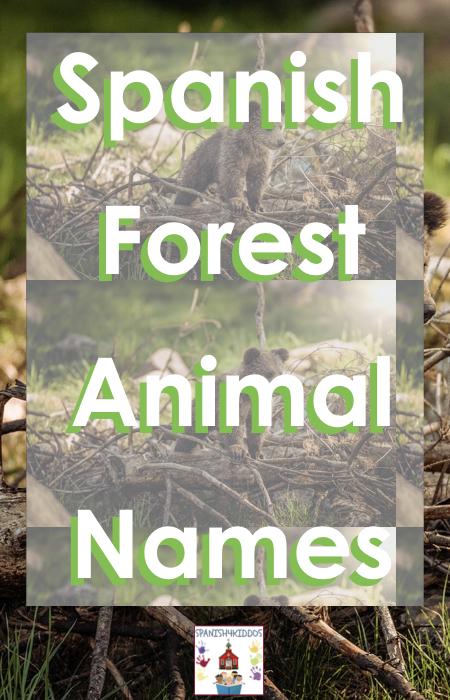
Forest animal names in Spanish are an excellent way to introduce animal living and habitat. When seeking lessons to teach Spanish, you want to look for themes.
In this case, learning about forest animals consists of Spanish vocabulary, animal living, and habitats. Besides a general science component, you also want to seek learning materials that approach reading and writing from different perspectives.
Forest Animal Names in Spanish
While many animals are living in a forest, here is a brief list that young learners can relate. For instance, young children between the ages of three to seven relate to seeing or reading about forest animals.
When teaching forest animals in Spanish, keep l essons simple, short, and motivating. Showing too many details about food, habitats, climate, and other scientific concepts might overwhelm young learners.
Instructional Tips Using Animal Themes
Introducing forest animal names can begin with a graphic organizer or a group discussion. Whether you use a typical KWL chart or Know-Want-Learned, making that connection is a fundamental step in the lesson.
For example, children need to correlate what they have experienced to what they know now. In that way, you will be able to supplement the learning with reading and writing. However, not every child has experienced, for instance, seeing or hearing a squirrel.
That is, introducing those elements such as forest, jungle, or farm animals generates curiosity and learning. At those moments, the education in children strengths when you implement reading and writing materials.
While many worksheets and workbooks encourage coloring and simple reading, look for resources that enhance the depth of knowledge. Even if you use basic printables of animals and habitats, supplement those lessons with further learning.
For kindergarten, you might want to consider using dramatic play, arts, and general science experiments. On the other hand, first and second graders benefit from reading and writing practice as they learn about forest animals.
Either way, young learners begin to foster an appreciation for animals, taking care of the environment, and science knowledge.

